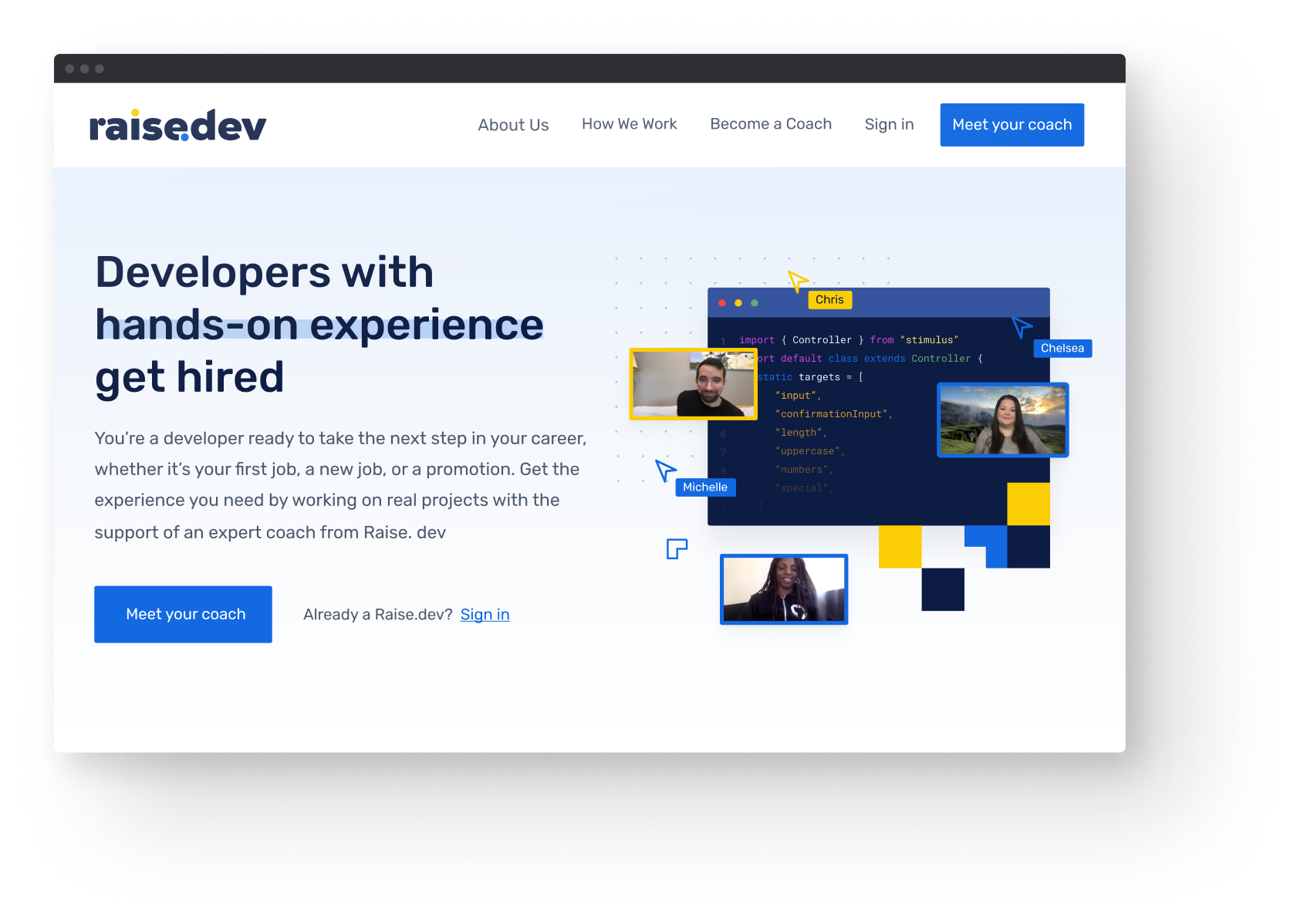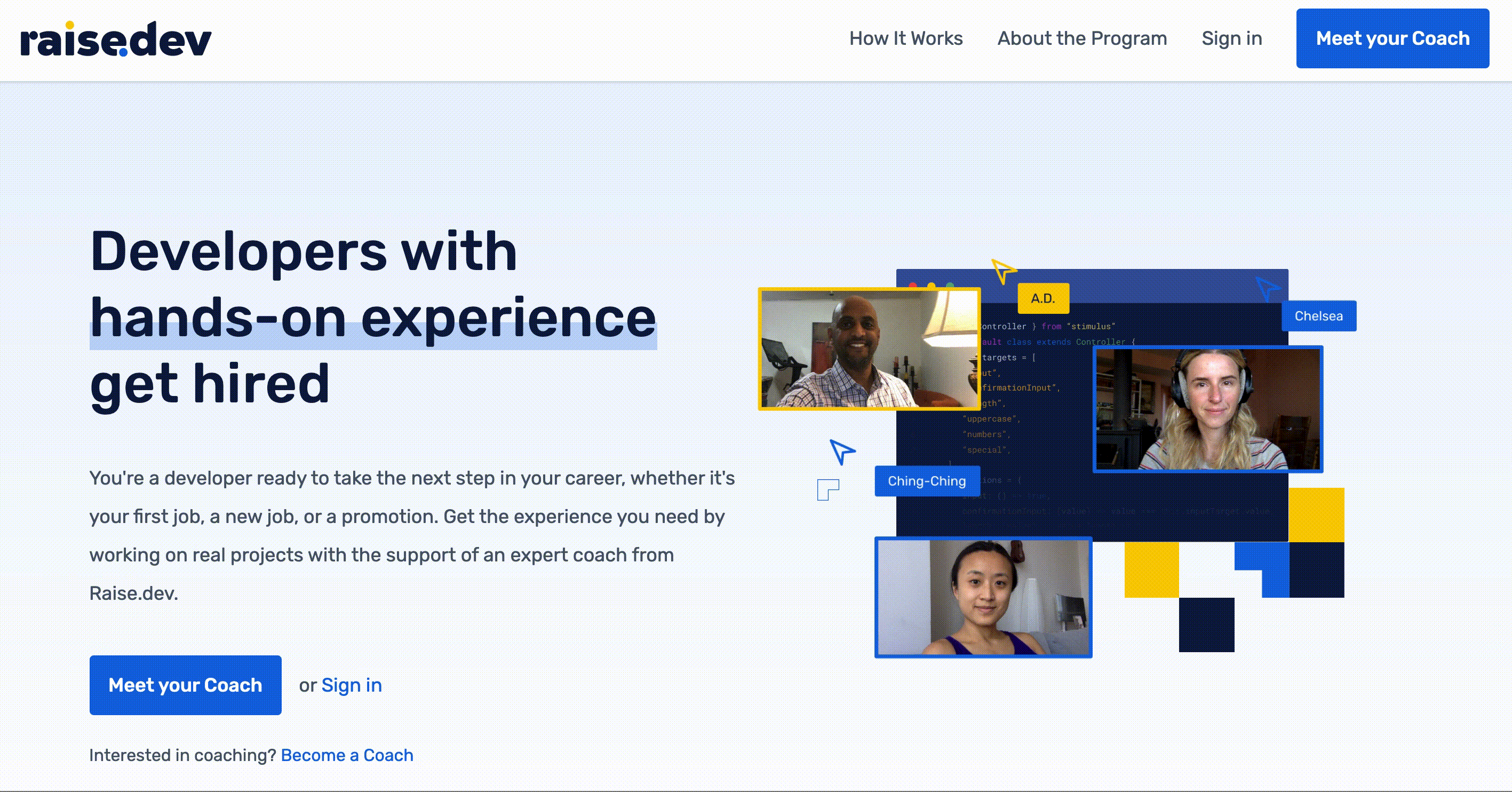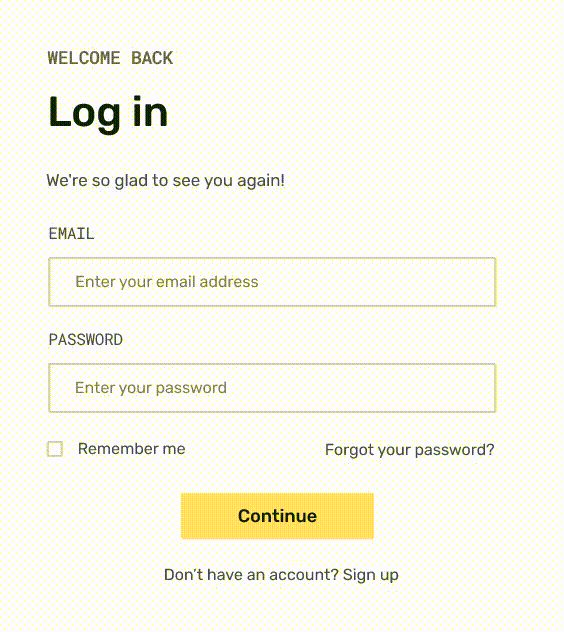Raise.Dev
Redesigning a digital experience for a developer mentorship platform

Overview
my role
as the sole UI/UX designer, I
01 marketing
Redesigning Raise.dev and implementing a visual tone and language that speaks to the developer education space

Developers who need a second set of eyes to take the next step forward
The previous website was a static page and offered little to no information relating to the product they were offering. In addition to landing, an MVP for an internal coaching platform was needed to facilitate the existing mentorship program.
The problem I was on boarded to help solve was how might we brand and market Raise.dev as a platform that focuses on helping professional developers advance in their careers.
During the ideation process, I presented mockups to the team to get their feedback, where I was then able to create further definied hi-fi's.
As the sole designer, the design process was still important to work on as a team, as their feedback provided effective changes to the appearance of the mockups and to the live site.
Building the brand identity from scratch that’s familiar to the developer world
The selected colors were calm, yet with an electrifying blue, accompanied with a bright, yet, a warm yellow. These color pairings are settled down with a dark navy, that’s used in the heading styles across the Raise.dev platform. Tertiary and accent colors were used to facilitate in the brand illustrations.
02 UX Flow
Defining a user experience for the developer onboarding flow


Task analysis for new users signing up onto the platform
The MVP relied on getting as many users onboarded onto the platform and in order to understand how to build the sign up feature, by creating a user flow helped to visualize the steps needed for new and invited users and for existing users.
03 Design System
A design system providing a 1:1 design to development relationship
As the product grows, there would need to be consistent styling for the Raise.dev platform. The team faced 2 issues:
Proposed solutions
The solution was to organize the files, which would lead to better locating the components needed. The way we organized our files was a core factor in building the design system. The goal would be for anyone to have the ability to pull atoms or component pieces together to create the intended feature. This will also allow for the designer to quickly create components if we need anything new or to update an existing piece.
By componentizing our design, we are optimizing the way we design atoms, components and slices to build the front-end as well.Goals & Guidelines
Outcomes
For a successful design to developer collaboration, consistency in our designs were imperative. I designed the style guide early on, in such a way, that was helpful for when we were ready to create a design system.
Raise.dev Design System
Reflection
Retrospective
Executing the MVP amidst the chaos of a global pandemic
